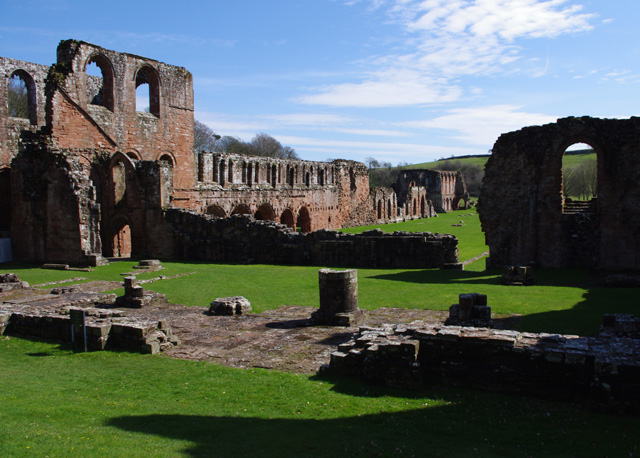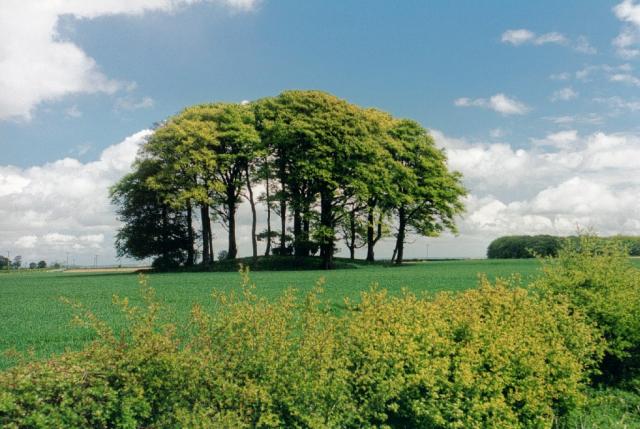|
Yarlside
Yarlside is a hill in the Howgill Fells, Cumbria (historically Westmorland), England. This fell is not to be confused with the Yarlside area near Barrow-in-Furness, once served by the Yarlside Iron Mines tramway. That lies to the west. Nor should it be confused with Great Yarlside The Wasdale Horseshoe is a group of hills on the eastern fringe of the English Lake District, to the west of the A6, south of Shap, Cumbria. They surround the valley of Wasdale Beck, a tributary of Birk Beck and ultimately of the River Lune. ... and Little Yarlside on the eastern fringes of the Lake District, to the northwest. Peaks of the Yorkshire Dales Marilyns of England Hewitts of England Nuttalls Ravenstonedale {{Cumbria-geo-stub ... [...More Info...] [...Related Items...] OR: [Wikipedia] [Google] [Baidu] |
Yarlside Iron Mines Tramway
The Yarlside Iron Mines tramway or Parkhouse Mineral Railway was built as a one-mile (1.6 km) long innovative railway from the Parkhouse Haematite Ore Mines to the Roose railway station on the Furness Railway, then in North Lancashire, now in Cumbria, England. Similar to a monorail, it had stabilising side rollers, invented and patented by John Barraclough Fell. The Yarlside area near Barrow-in-Furness served by this railway is unrelated to Yarlside Fell, which is to the east. History Yarlside Iron Mines tramway John Barraclough Fell designed and built in 1868 the original ''Yarlside Iron Mines tramway'' as a horse drawn monorail from an exchange siding at the Furness Railway to the Yarlside Iron Mines.Martin and Jean NorgateYarlside Iron Mines tramway, other name: Parkhouse Mineral Railway Geography Department, Portsmouth University, 2014. Parkhouse Tramway Two years later, in 1870, John Barraclough Fell replaced it with another experimental narrow gauge railway line ... [...More Info...] [...Related Items...] OR: [Wikipedia] [Google] [Baidu] |
Little Yarlside
The Wasdale Horseshoe is a group of hills on the eastern fringe of the English Lake District, to the west of the A6, south of Shap, Cumbria. They surround the valley of Wasdale Beck, a tributary of Birk Beck and ultimately of the River Lune. The horseshoe is the subject of a chapter of Wainwright's book ''The Outlying Fells of Lakeland''. This Wasdale should not be confused with the better known Wasdale, containing Wast Water, on the west of the Lake District. Wainwright's clockwise walk starts from the highest point of the A6 at . The summits reached are Whatshaw Common at , Little Yarlside at , Great Yarlside (the third highest of the Outlying Fells) at and Wasdale Pike at . Wasdale Pike is within the Shap Fells Shap is a linear village and civil parish located among fells and isolated dales in Eden district, Cumbria, England, in the historic county of Westmorland. The parish had a population of 1,221 in 2001, increasing slightly to 1,264 at the 2011 ... Site of S ... [...More Info...] [...Related Items...] OR: [Wikipedia] [Google] [Baidu] |
Barrow-in-Furness
Barrow-in-Furness is a port town in Cumbria, England. Historically in Lancashire, it was incorporated as a municipal borough in 1867 and merged with Dalton-in-Furness Urban District in 1974 to form the Borough of Barrow-in-Furness. In 2023 the borough will merge with Eden and South Lakeland districts to form a new unitary authority; Westmorland and Furness. At the tip of the Furness peninsula, close to the Lake District, it is bordered by Morecambe Bay, the Duddon Estuary and the Irish Sea. In 2011, Barrow's population was 56,745, making it the second largest urban area in Cumbria after Carlisle. Natives of Barrow, as well as the local dialect, are known as Barrovian. In the Middle Ages, Barrow was a small hamlet within the parish of Dalton-in-Furness with Furness Abbey, now on the outskirts of the town, controlling the local economy before its dissolution in 1537. The iron prospector Henry Schneider arrived in Furness in 1839 and, with other investors, opened th ... [...More Info...] [...Related Items...] OR: [Wikipedia] [Google] [Baidu] |
Hewitt (hill)
This is a list of Hewitt mountains in England, Wales and Ireland by height. Hewitts are defined as "Hills in England, Wales and Ireland over two thousand" feet in height, the general requirement to be called a "mountain" in the British Isles, and with a prominence above ; a mix of imperial and metric thresholds. The Hewitt classification was suggested by Alan Dawson in his 1992 book, "The Relative Hills of Britain". Dawson originally called his Hewitts "Sweats", from "Summits - Wales and England Above Two thousand", before settling on the label Hewitt. In a series of three booklets edited by Dave Hewitt, the list of English Hewitts was published in 1997, and the list of Welsh Hewitts was also published in 1997, and the list of Irish Hewitts was published in 1998. Hewitts were designed to address one of the criticisms of the 1990 Nuttall classification, by requiring hills to have a relative height of , a threshold that the UIAA had set down in 1994 for an "independen ... [...More Info...] [...Related Items...] OR: [Wikipedia] [Google] [Baidu] |
Marilyns Of England
This is a list of Marilyn hills and mountains in the United Kingdom, Isle of Man and Ireland by height. Marilyns are defined as peaks with a prominence of or more, regardless of height or any other merit (e.g. topographic isolation, as used in Munros). Thus, Marilyns can be mountains, with a height above , or relatively small hills. there were 2,011 recorded Marilyns. Definition The Marilyn classification was created by Alan Dawson in his 1992 book ''The Relative Hills of Britain''. The name Marilyn was coined by Dawson as a punning contrast to the '' Munro'' classification of Scottish mountains above , but which has no explicit prominence threshold, being homophonous with (Marilyn) '' Monroe''. The list of Marilyns was extended to Ireland by Clem Clements. Marilyn was the first of several subsequent British Isles classifications that rely solely on prominence, including the P600s, the HuMPs, and the TuMPs. Topographic prominence is a more difficult to estimate than ... [...More Info...] [...Related Items...] OR: [Wikipedia] [Google] [Baidu] |
Howgill Fells
The Howgill Fells are uplands in Northern England between the Lake District and the Yorkshire Dales, lying roughly within a triangle formed by the towns of Sedbergh and Kirkby Stephen and the village of Tebay.The Howgill Fells in Cumbria ''www.visitcumbria.com'' The name Howgill derives from the word ''haugr'' meaning a hill or barrow, plus ''gil'' meaning a narrow valley. Geography The Howgill Fells are bounded by the (and the |
Marilyn (hill)
This is a list of Marilyn hills and mountains in the United Kingdom, Isle of Man and Ireland by height. Marilyns are defined as peaks with a prominence of or more, regardless of height or any other merit (e.g. topographic isolation, as used in Munros). Thus, Marilyns can be mountains, with a height above , or relatively small hills. there were 2,011 recorded Marilyns. Definition The Marilyn classification was created by Alan Dawson in his 1992 book ''The Relative Hills of Britain''. The name Marilyn was coined by Dawson as a punning contrast to the '' Munro'' classification of Scottish mountains above , but which has no explicit prominence threshold, being homophonous with (Marilyn) '' Monroe''. The list of Marilyns was extended to Ireland by Clem Clements. Marilyn was the first of several subsequent British Isles classifications that rely solely on prominence, including the P600s, the HuMPs, and the TuMPs. Topographic prominence is a more difficult to estimate than ... [...More Info...] [...Related Items...] OR: [Wikipedia] [Google] [Baidu] |
Peaks Of The Yorkshire Dales
Peak or The Peak may refer to: Basic meanings Geology * Mountain peak ** Pyramidal peak, a mountaintop that has been sculpted by erosion to form a point Mathematics * Peak hour or rush hour, in traffic congestion * Peak (geometry), an (''n''-3)-dimensional element of a polytope * Peak electricity demand or peak usage * Peak-to-peak, the highest (or sometimes the highest and lowest) points on a varying waveform * Peak (pharmacology), the time at which a drug reaches its maximum plasma concentration * Peak experience, psychological term for a euphoric mental state Resource production In terms of resource production, the peak is the moment when the production of a resource reaches a maximum level, after which it declines; in particular see: * Peak oil * Peak car * Peak coal * Peak copper * Peak farmland * Peak gas * Peak gold * Peak minerals * Peak phosphorus * Peak uranium * Peak water * Peak wheat * Peak wood Other basic meanings * Visor, a part of a hat, known as a "peak" in ... [...More Info...] [...Related Items...] OR: [Wikipedia] [Google] [Baidu] |
Lake District
The Lake District, also known as the Lakes or Lakeland, is a mountainous region in North West England. A popular holiday destination, it is famous for its lakes, forests, and mountains (or '' fells''), and its associations with William Wordsworth and other Lake Poets and also with Beatrix Potter and John Ruskin. The Lake District National Park was established in 1951 and covers an area of . It was designated a UNESCO World Heritage Site in 2017. The Lake District is today completely within Cumbria, a county and administrative unit created in 1974 by the Local Government Act 1972. However, it was historically divided between three English counties (Cumberland, Westmorland and Lancashire), sometimes referred to as the Lakes Counties. The three counties met at the Three Shire Stone on Wrynose Pass in the southern fells west of Ambleside. All the land in England higher than above sea level lies within the National Park, including Scafell Pike, the highest mountain in E ... [...More Info...] [...Related Items...] OR: [Wikipedia] [Google] [Baidu] |
The Calf
The Calf, at 676 m, is the highest top in the Howgill Fells, an area of high ground in the north-west of the Yorkshire Dales in the county of Cumbria (historically the West Riding of Yorkshire/Westmorland boundary). It can be ascended from the town of Sedbergh to the south, by way of Cautley Spout from the east, or up the long valley of Langdale from the north. The Sedbergh ascent is the most popular, and has the distinction of being on good paths all the way. The summit commands an extensive panorama A panorama (formed from Greek πᾶν "all" + ὅραμα "view") is any wide-angle view or representation of a physical space, whether in painting, drawing, photography, film, seismic images, or 3D modeling. The word was originally coined in ..., although foreground detail is obscured by the extreme flatness of the plateau. A twenty-mile skyline of the Lakeland peaks can be seen, as well as the Yorkshire Three Peaks and many of the nearer Howgill Fells. Calders ... [...More Info...] [...Related Items...] OR: [Wikipedia] [Google] [Baidu] |




